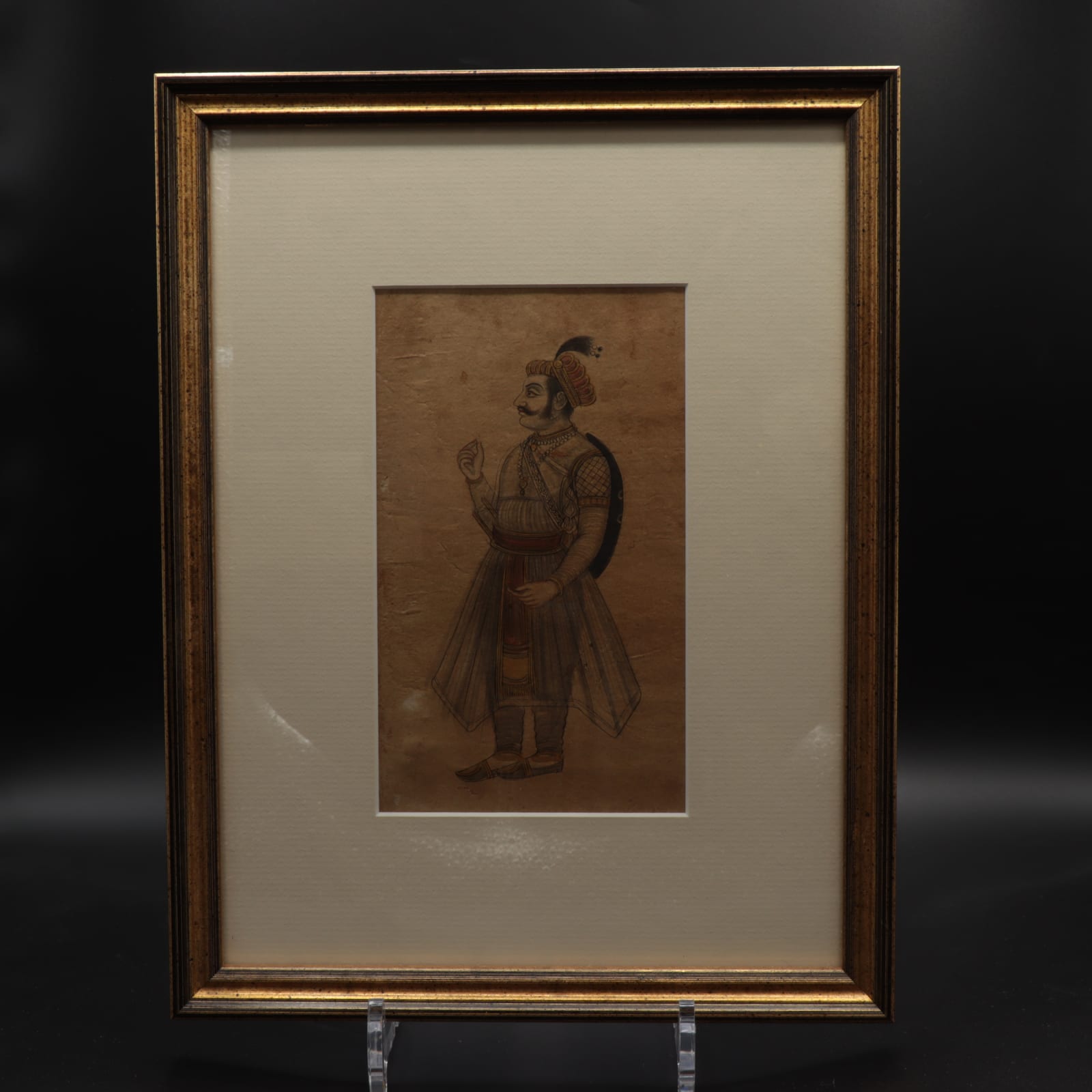Portrait of a Mughal Noble, 16th-19th Century CE
Paper
31 x 24 cm
12 1/4 x 9 1/2 in
12 1/4 x 9 1/2 in
LI.3005
The handmade miniature painting on paper depicts a Mughal court official in a pensive pose. The subject is depicted wearing an intricately decorated turban with feather, transparent silk sherwani, necklaces...
The handmade miniature painting on paper depicts a Mughal court official in a pensive pose. The subject is depicted wearing an intricately decorated turban with feather, transparent silk sherwani, necklaces made of pearls and diamonds, indicative of the position and status this male held in Mughal society. The painting is executed in a Mughal tradition, a style of painting on paper confined to miniatures either a book illustrations or single works (muraqqa). It emerged from Persian miniature painting and developed in the court of the Mughal Empire of the 16th to 18th centuries. Mughal painting immediately took a much greater interest in realistic portraiture than was typical of Persian miniatures. Subjects are rich in variety and include portraits, events and scenes from court life, wild life and hunting scenes and illustrations of battles. The Mughal dynasty was credited with consolidating Islam in South Asia alongside spreading Islamic (particularly Persian) arts and culture within the region.
The Mughal dynasty was founded in 1526 when Babur, a Central Asian Muslim prince, followed the example of his ancestor Timur (d.1405) and invaded the land he knew as Hindustan (the Indian subcontinent). Babur's languages were Turki, in which he wrote his memoirs, and Persian, the language of culture across Iran and Central Asia.
The "golden age" of Mughal art covered the period from about 1580 to 1650. Hindu and Muslim artists and craftsmen from the northern regions of the Indian subcontinent worked with Iranian masters in the the royal workshops. The combination of their different traditions and the technological and cultural transfer between different artisans resulted in a new distinctive style which included elements of all these different cultures.
The Mughal dynasty was founded in 1526 when Babur, a Central Asian Muslim prince, followed the example of his ancestor Timur (d.1405) and invaded the land he knew as Hindustan (the Indian subcontinent). Babur's languages were Turki, in which he wrote his memoirs, and Persian, the language of culture across Iran and Central Asia.
The "golden age" of Mughal art covered the period from about 1580 to 1650. Hindu and Muslim artists and craftsmen from the northern regions of the Indian subcontinent worked with Iranian masters in the the royal workshops. The combination of their different traditions and the technological and cultural transfer between different artisans resulted in a new distinctive style which included elements of all these different cultures.
